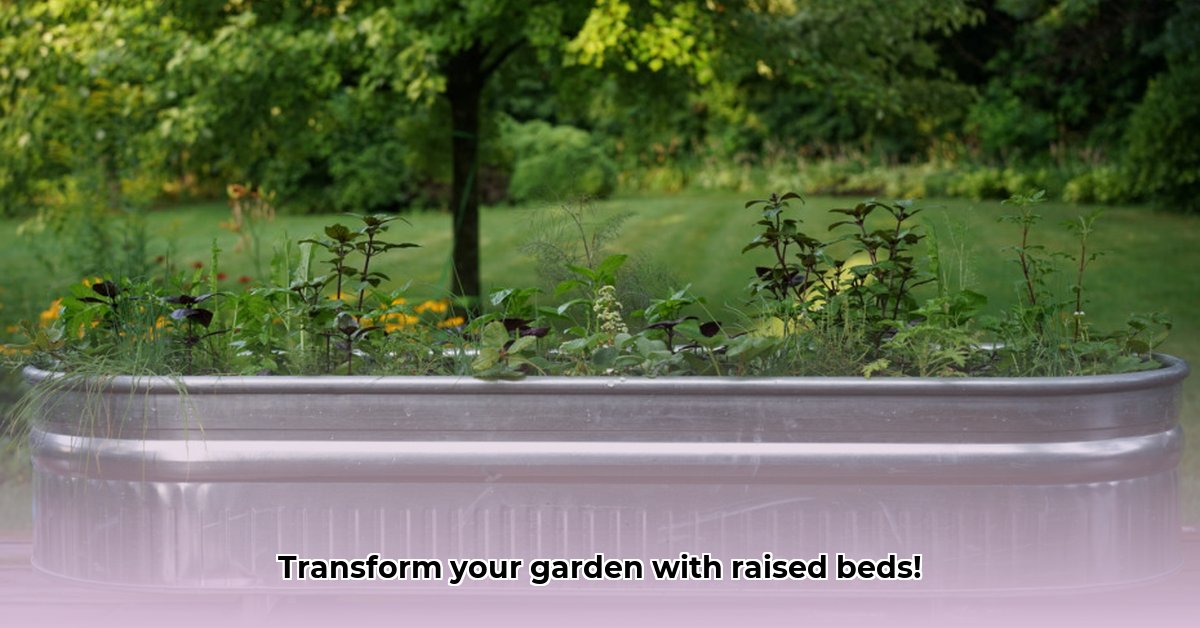
Ready to experience the joys of gardening with less backache and more abundant harvests? Metal raised garden beds from Tractor Supply offer a fantastic solution, combining convenience with the potential for sustainable gardening practices. This comprehensive guide will walk you through choosing the right bed, setting it up, and cultivating a thriving garden while minimizing your environmental impact. For more information on Tractor Supply's selection, check out this helpful resource.
Choosing the Right Metal Raised Bed from Tractor Supply: A Sustainable Selection
Tractor Supply offers several metal raised bed options, each with unique characteristics impacting durability, longevity, and environmental footprint. The most common are galvanized steel and powder-coated steel. Galvanized steel resists rust, offering a good balance of durability and cost. Powder-coated steel adds an extra layer of protection against the elements, extending its lifespan and often boasting a wider array of colors. However, the manufacturing processes for both involve energy consumption and material extraction, making responsible sourcing and disposal crucial.
Before purchasing, assess your needs carefully. Consider the size of the bed based on your available space and the number of plants you intend to grow. Taller models can significantly reduce back strain during planting and harvesting, a key benefit for many gardeners. Inspect features such as built-in drainage systems, vital for preventing waterlogged soil. Finally, always compare prices and features across various models, considering not only the initial cost but also the bed’s projected lifespan – a more durable bed may prove more cost-effective in the long run. Remember to check reviews and compare prices to ensure a good investment.
Setting Up Your Metal Raised Bed: A Step-by-Step Guide
Transforming your new raised bed into a flourishing garden is a straightforward process. Follow these steps for optimal results:
- Site Selection: Choose a sunny location receiving at least six hours of direct sunlight daily. Ensure easy access for watering and harvesting.
- Assembly: Carefully follow the manufacturer’s instructions. Most metal raised beds are prefabricated, requiring simple assembly. Seek assistance if needed.
- Drainage Enhancement: Create a well-draining base to prevent waterlogging, which is detrimental to plant health. Lay down a layer of gravel or landscape fabric at the bottom before adding soil. This simple step significantly impacts plant success.
- Soil Preparation: Invest in a high-quality potting mix—a rich, well-draining soil is crucial for healthy plant growth. Amend the soil with compost to boost fertility and improve drainage – a 1:1 mix of potting soil and compost works well.
Gardening with Metal Raised Beds: Cultivating Success
Planting in your raised bed is relatively straightforward. Follow recommended spacing guidelines for your chosen plants. Consistent watering is essential, especially during dry spells. Monitor your plants for pests and diseases, addressing any issues promptly to prevent larger infestations. Employ Integrated Pest Management (IPM) techniques whenever possible, using natural methods like beneficial insects to reduce reliance on harmful chemicals. Regularly replenish your soil with compost to maintain its health and fertility, ensuring robust plant growth and a bountiful harvest.
Addressing Sustainability Concerns: A Holistic Approach
While metal raised beds offer longevity, their production and eventual disposal have environmental implications. The energy required to manufacture steel and the potential for eventual corrosion contribute to their environmental footprint. To mitigate this, consider these factors:
- Lifespan: Choose a durable model like those made of Aluzinc steel which significantly extends the bed's usability, reducing the frequency of replacements.
- Sourcing: Look for manufacturers committed to sustainable practices, using recycled materials whenever possible.
- Disposal: Explore responsible disposal options: most metal recycling centers accept steel, diverting waste from landfills.
By carefully considering these factors, you'll minimize the environmental impact of your gardening endeavor.
Cost Comparison and Long-Term Planning: A Wise Investment
Metal raised beds typically have a higher initial cost than alternatives such as wooden beds or hugelkultur beds. However, their exceptional durability and minimal maintenance needs often make them a more cost-effective choice in the long run. Wooden beds may require frequent replacement due to rot, significantly impacting their long-term cost. Hugelkultur, while eco-friendly, demands more extensive labor investment. Consider the total cost of ownership – factoring in initial cost, maintenance, and eventual replacement – to make a well-informed decision.
Conclusion: Sustainable Gardening for Years to Come
Metal raised beds from Tractor Supply present a compelling option for gardeners seeking convenience and a potentially sustainable solution. Their durability minimizes the need for frequent replacements, reducing waste. However, responsible sourcing, mindful use and diligent recycling are integral to minimizing their environmental impact. By acknowledging the entire life cycle of the bed and implementing sustainable practices, you can enjoy a bountiful harvest while minimizing your ecological footprint. Happy gardening!